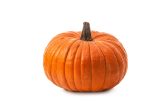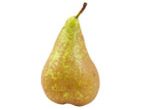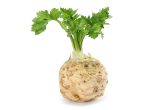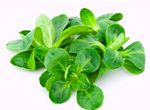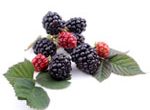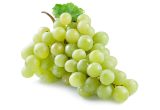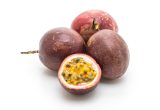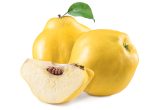Papaya

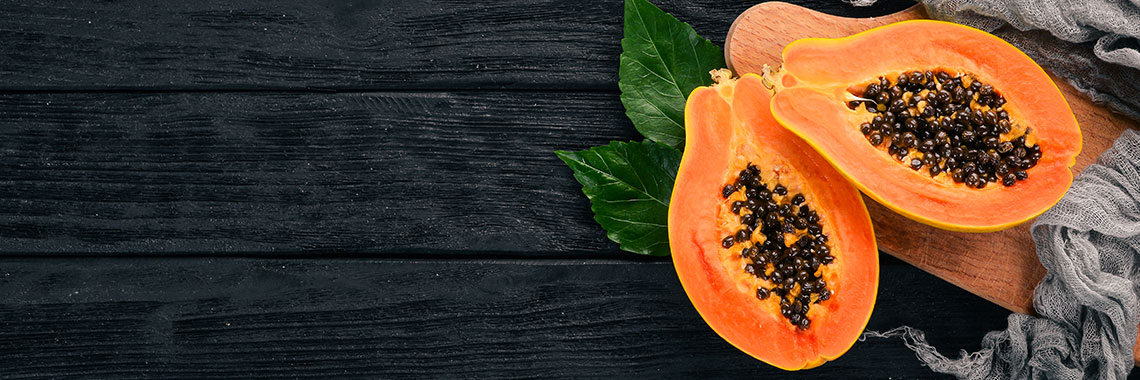
Description
- Papaya (Carica papaya) belongs to the Cariaceae family.
- Brazil is the world leader in papaya production (Pinto, 2013).
- It is an important tropical fruit (Pinto, 2013), growing in tropical and subtropical environments (Devitt, 2010).
- Papaya is a climacteric fruit (Fabi, 2007).
PHYSICAL AND ORGANOLEPTIC CHARACTERISTICS
- The majority of quality indices, such as firmness, acidity, pH, colour and size, are cultivar dependent (Roberts, 2014).
- There are two types of papaya: red flesh and yellow flesh. Lycopene is the main carotenoid in the pulp of red-fleshed papaya, while β-carotene and β-cryptoxanthin are the main carotenoids in the pulp of yellow-fleshed papaya (Shen, 2019).
- During ripening, the skin colour of red-fleshed papaya changes from green to yellow, and its flesh colour changes from white to red, due to the rapid breakdown of chlorophyll and the appearance of carotenoids such as lutein and β-carotene (Shen, 2019).
- The main volatile compounds of papaya belong to the ester and terpene family such as linalool and benzyl isothiocyanate (Pino, 2019).
- Among the one hundred and thirty-seven aromatic components identified in Red Maradol papaya fruit, twenty-five are considered the most active and contribute to the typical papaya aroma (Pino, 2014). In particular, ethyl butanoate, benzyl isothiocyanate, 1-hexen-3-one, (E)- β-ionone and methyl benzoate are present (Pino, 2014).
COMPOSITION CHARACTERISTICS (excluding macronutrients, vitamins and minerals)
- The carotenoids in papaya help prevent the onset of certain diseases such as cancers and eye diseases (Shen, 2019).
- Papaya is rich in lycopene, a carotenoid that can improve vascular function and contributes to the primary and secondary prevention of cardiovascular disorders. Lycopene has anti-atherosclerotic, antioxidant, anti-inflammatory, anti-hypertensive, anti-platelet, anti-apoptotic effects and helps to reduce arterial stiffness (Mozos, 2018).
RAW
The following values are approximate and depend on variety, season, ripeness, cultivation conditions, etc. Papaya provides an average of 42.20 calories (kcal) per 100 g, i.e. 178 kJ.
COMPOSITION TABLES
For each nutrient, the tables provide information on the content, the minimum and maximum values, as well as the percentage of the Dietary Reference Values (DRVs) for 100 g net of papaya, pulp, raw.
MACRONUTRIENTS
| Constituent (g) | Average content |
Min-Max per 100g |
DRV% |
|---|---|---|---|
| Water | 88,80 | 84,90 - 93,30 | - |
| Fibers | 1,80 | 1,20 - 2,30 | - |
| Carbohydrates | 8,53 | 8,01 - 9,90 | 3,28 |
| Sugars | 8,10 | 5,19 - 9,99 | 9 |
| Lipids | < 0,30 | 0 - 0,60 | - |
| Saturated fat | < 0,01 | NC - 0,093 | - |
| Protein | 0,75 | 0,25 - NC | 1,50 |
| Constituent (g) | Amount | Min-Max | DRV% |
|---|---|---|---|
| Water | Ciqual 2020 (valeur issue des analyses Ciqual-Aprifel 2018) | - | - |
| Fibers | Ciqual 2020 (valeur issue des analyses Ciqual-Aprifel 2018) | - | - |
| Carbohydrates | Ciqual 2020 | - | Règlement (UE) N°1169/2011 du parlement Européen et du conseil du 25 octobre 2011 |
| Sugars | Ciqual 2020 (valeur issue des analyses Ciqual-Aprifel 2018) | - | Règlement (UE) N°1169/2011 du parlement Européen et du conseil du 25 octobre 2011 |
| Lipids | Ciqual 2020 (valeur issue des analyses Ciqual-Aprifel 2018) | - | Règlement (UE) N°1169/2011 du parlement Européen et du conseil du 25 octobre 2011 |
| Saturated fat | Ciqual 2020 (valeur issue des analyses Ciqual-Aprifel 2018) | - | Règlement (UE) N°1169/2011 du parlement Européen et du conseil du 25 octobre 2011 |
| Protein | Ciqual 2020 (valeur issue des analyses Ciqual-Aprifel 2018) | - | Règlement (UE) N°1169/2011 du parlement Européen et du conseil du 25 octobre 2011 |
Zoom on carbohydrates
- Its carbohydrate content (8.53 g per 100 g) is also lower than the average amount found in fresh fruit (11.31 g per 100 g).
- These are mainly fructose (4.10 g per 100 g) and glucose (4 g per 100 g).
Zoom on fibres
- Papaya contains less fibre (1.80 g per 100 g) than the average for fresh fruit (2.77 g per 100 g).
Zoom on lipids
- Papaya does is fat-free* as it contains less than 0.5 g of fat per 100 g.
*Regulation (EC) No 1924/2006 of the European Parliament and of the Council of 20 December 2006 on nutrition and health claims made on foods.
MINERALS AND TRACE ELEMENTS
| Constituent | Average content |
Min-Max per 100g |
DRV% |
|---|---|---|---|
| Calcium (mg) | 22 | 7,82 - 38,60 | 2,75 |
| Chloride (mg) | 63 | - | 7,88 |
| Copper (mg) | < 0,01 | NC - 0,14 | - |
| Iron (mg) | 0,16 | 0,14 - 2 | 1,14 |
| Iodine (µg) | < 20 | - | - |
| Magnesium (mg) | 18 | 15 - 33 | 4,80 |
| Manganese (mg) | 0,04 | 0,01 - 0,088 | 2 |
| Phosphorus (mg) | 8,70 | 5 - 20 | 1,24 |
| Potassium (mg) | 200 | 90 - 223 | 10 |
| Selenium (µg) | < 20 | - | - |
| Sodium (mg) | < 5 | 2,10 - 24 | - |
| Zinc (mg) | < 0,05 | NC - 0,11 | - |
| Constituent | Amount | Min-Max | DRV% |
|---|---|---|---|
| Calcium (mg) | Ciqual 2020 (valeur issue des analyses Ciqual-Aprifel 2018) | - | Règlement (UE) N°1169/2011 du parlement Européen et du conseil du 25 octobre 2011 |
| Chloride (mg) | Ciqual 2020 (valeur issue des analyses Ciqual-Aprifel 2018) | - | Règlement (UE) N°1169/2011 du parlement Européen et du conseil du 25 octobre 2011 |
| Copper (mg) | Ciqual 2020 (valeur issue des analyses Ciqual-Aprifel 2018) | - | Règlement (UE) N°1169/2011 du parlement Européen et du conseil du 25 octobre 2011 |
| Iron (mg) | Ciqual 2020 (valeur issue des analyses Ciqual-Aprifel 2018) | - | Règlement (UE) N°1169/2011 du parlement Européen et du conseil du 25 octobre 2011 |
| Iodine (µg) | Ciqual 2020 (valeur issue des analyses Ciqual-Aprifel 2018) | - | Règlement (UE) N°1169/2011 du parlement Européen et du conseil du 25 octobre 2011 |
| Magnesium (mg) | Ciqual 2020 (valeur issue des analyses Ciqual-Aprifel 2018) | - | Règlement (UE) N°1169/2011 du parlement Européen et du conseil du 25 octobre 2011 |
| Manganese (mg) | Ciqual 2020 (valeur issue des analyses Ciqual-Aprifel 2018) | - | Règlement (UE) N°1169/2011 du parlement Européen et du conseil du 25 octobre 2011 |
| Phosphorus (mg) | Ciqual 2020 (valeur issue des analyses Ciqual-Aprifel 2018) | - | Règlement (UE) N°1169/2011 du parlement Européen et du conseil du 25 octobre 2011 |
| Potassium (mg) | Ciqual 2020 (valeur issue des analyses Ciqual-Aprifel 2018) | - | Règlement (UE) N°1169/2011 du parlement Européen et du conseil du 25 octobre 2011 |
| Selenium (µg) | Ciqual 2020 (valeur issue des analyses Ciqual-Aprifel 2018) | - | Règlement (UE) N°1169/2011 du parlement Européen et du conseil du 25 octobre 2011 |
| Sodium (mg) | Ciqual 2020 (valeur issue des analyses Ciqual-Aprifel 2018) | - | - |
| Zinc (mg) | Ciqual 2020 (valeur issue des analyses Ciqual-Aprifel 2018) | - | Règlement (UE) N°1169/2011 du parlement Européen et du conseil du 25 octobre 2011 |
Zoom on minerals and trace elements
- Papaya provides a significant amount of potassium, equivalent to 10% of DRVs, i.e. 200 mg per 100 g.
- It also provides the equivalent of 7.88% of DRVs for chloride, i.e. 63 mg per 100 g.
- The amount of other minerals and trace elements is less than 5% of DRVs.
VITAMINS
| Constituent | Average content |
Min-Max per 100g |
DRV% |
|---|---|---|---|
| Provitamin A Beta-carotene (µg) | 351 | 31 - 910 | - |
| Vitamin A equivalent (µg) | 58,50 | 5,17 - 151,67 | 7,31 |
| Vitamin B1 (mg) | 0,017 | 0,015 - 0,03 | 1,55 |
| Vitamin B2 (mg) | 0,017 | 0,015 - 0,039 | 1,21 |
| Vitamin B3 (mg) | 0,29 | 0,26 - 0,49 | 1,81 |
| Vitamin B5 (mg) | 0,18 | 0,13 - 0,38 | 3 |
| Vitamin B6 (mg) | 0,02 | 0,019 - 0,056 | 1,43 |
| Vitamin B9 (µg) | 55,30 | 26 - 63 | 27,65 |
| Vitamin C (mg) | 65,30 | 24,60 - 93,10 | 81,63 |
| Vitamin E (mg) | < 0,08 | NC - 1,12 | - |
| Vitamin K1 (µg) | < 0,80 | NC - 2,60 | - |
| Constituent | Amount | Min-Max | DRV% |
|---|---|---|---|
| Provitamin A Beta-carotene (µg) | Ciqual 2020 (valeur issue des analyses Ciqual-Aprifel 2018) | - | - |
| Vitamin A equivalent (µg) | Calcul à partir de la valeur Provitamine A Béta-carotène* | - | Règlement (UE) N°1169/2011 du parlement Européen et du conseil du 25 octobre 2011 |
| Vitamin B1 (mg) | Ciqual 2020 (valeur issue des analyses Ciqual-Aprifel 2018) | - | Règlement (UE) N°1169/2011 du parlement Européen et du conseil du 25 octobre 2011 |
| Vitamin B2 (mg) | Ciqual 2020 (valeur issue des analyses Ciqual-Aprifel 2018) | - | Règlement (UE) N°1169/2011 du parlement Européen et du conseil du 25 octobre 2011 |
| Vitamin B3 (mg) | Ciqual 2020 (valeur issue des analyses Ciqual-Aprifel 2018) | - | Règlement (UE) N°1169/2011 du parlement Européen et du conseil du 25 octobre 2011 |
| Vitamin B5 (mg) | Ciqual 2020 (valeur issue des analyses Ciqual-Aprifel 2018) | - | Règlement (UE) N°1169/2011 du parlement Européen et du conseil du 25 octobre 2011 |
| Vitamin B6 (mg) | Ciqual 2020 (valeur issue des analyses Ciqual-Aprifel 2018) | - | Règlement (UE) N°1169/2011 du parlement Européen et du conseil du 25 octobre 2011 |
| Vitamin B9 (µg) | Ciqual 2020 (valeur issue des analyses Ciqual-Aprifel 2018) | - | Règlement (UE) N°1169/2011 du parlement Européen et du conseil du 25 octobre 2011 |
| Vitamin C (mg) | Ciqual 2020 (valeur issue des analyses Ciqual-Aprifel 2018) | - | Règlement (UE) N°1169/2011 du parlement Européen et du conseil du 25 octobre 2011 |
| Vitamin E (mg) | Ciqual 2020 | - | Règlement (UE) N°1169/2011 du parlement Européen et du conseil du 25 octobre 2011 |
| Vitamin K1 (µg) | Ciqual 2020 (valeur issue des analyses Ciqual-Aprifel 2018) | - | Règlement (UE) N°1169/2011 du parlement Européen et du conseil du 25 octobre 2011 |
Zoom on vitamins
- Papaya is high in vitamin C as it provides the equivalent of 81.63% of DRVs, i.e. 65.30 mg per 100 g. According to the Ciqual 2020 table, papaya is the 4th fruit with the highest vitamin C content, after guava, blackcurrant and kiwi.
- It is also a source of vitamin B9 as it provides the equivalent of 27.65% of DRVs, i.e. 55.30 µg per 100 g. Moreover, papaya is the 5th fruit to contain the most vitamin B9, after passion fruit, strawberries, mango and melon.
- The quantity of other vitamins represents less than 8% of DRVs.
*Calculation made: Beta-Carotene / 6 + retinol
POLYPHENOLS
| Constituent (mg) | Average content |
Min-Max per 100mg |
|---|---|---|
| Lignanes (mg) | 0,002 | 0,002 - 0,002 |
| Total polyphenols | 0,002 | 0,002 - 0,002 |
| Constituent (mg) | Amount | Min-Max |
|---|---|---|
| Lignanes | Phénol-Explorer version 3.6 Méthode utilisée : Chromatographie après hydrolyse | - |
| Total polyphenols | Phénol-Explorer version 3.6 Méthode utilisée : Chromatographie après hydrolyse | - |
Zoom on polyphenols
- Polyphenols are substances with an antioxidant effect.
- Lignans are the only phenolic compound contained in papaya according to the chromatographic extraction method.
Nutrition and health claims
According to the definitions of nutrition claims as presented in Regulation (EC) No 1924/2006 on nutrition and health claims, and in view of the composition of papaya, the following claims may be used:
NUTRITION CLAIMS OF PAPAYA
- High in vitamin C (100 g of papaya provide more than 30% of DRVs)
- Fat-free (100 g of papaya does not contain more than 0.5 g of fat)
- Source of vitamin B9 (100 g of papaya provide more than 15% of DRVs)
HEALTH CLAIMS (for a consumption of 100 g of papaya)
Vitamin C
- Vitamin C contributes to:
- normal function of the immune system during and after intense physical exercise,
- normal collagen formation for the normal function of blood vessels,
- normal collagen formation for the normal function of bones,
- normal collagen formation for the normal function of cartilage,
- normal collagen formation for the normal function of gums,
- normal collagen formation for the normal function of skin,
- normal collagen formation for the normal function of teeth,
- normal energy-yielding metabolism,
- normal functioning of the nervous system,
- normal psychological function,
- normal function of the immune system,
- protection of cells from oxidative stress,
- reduction of tiredness and fatigue,
- regeneration of the reduced form of vitamin E.
- Vitamin C increases iron absorption.
Folates or vitamin B9
- Folates contribute to:
- maternal tissue growth during pregnancy,
- normal amino acid synthesis,
- normal blood formation,
- normal homocysteine metabolism,
- normal psychological function,
- normal function of the immune system,
- reduction of tiredness and fatigue.
- Folates have a role in the process of cell division.
References
- Agence nationale de sécurité sanitaire de l’alimentation, de l’environnement et du travail. Table de composition nutritionnelle des aliments Ciqual 2020. Consultée le 31/08/2020 depuis le site internet Ciqual https://ciqual.anses.fr/
- Devitt LC, Fanning K, Dietzgen RG, Holton TA. Isolation and functional characterization of a lycopene beta-cyclase gene that controls fruit colour of papaya (Carica papaya L.). J Exp Bot. 2010;61(1):33-9.
- Fabi JP, Cordenunsi BR, de Mattos Barreto GP, Mercadante AZ, Lajolo FM, Oliveira do Nascimento JR. Papaya fruit ripening: response to ethylene and 1-methylcyclopropene (1-MCP). J Agric Food Chem. 2007;55(15):6118-23.
- Mozos I, Stoian D, Caraba A, Malainer C, Horbańczuk JO, Atanasov AG. Lycopene and Vascular Health. Frontiers in Pharmacology. 2018;9: 521.
- Neveu V, Perez-Jiménez J, Vos F, Crespy V, du Chaffaut L, Mennen L, Knox C, Eisner R, Cruz J, Wishart D, Scalbert A. (2010) Phenol-Explorer: an online comprehensive database on polyphenol contents in foods. Database, doi: 10.1093/database/bap024. Full text (free access)
- Pino JA. Odour-active compounds in papaya fruit cv. Red Maradol. Food Chem. 2014;146:120-6.
- Pino JA. Tendencias en las publicaciones en relación con el aroma de la papaya 1965-2018: Trends in publication related to papaya aroma during 1965-2018. Ciencia y Tecnología de Alimentos. 2019;29(1): 47–53.
- Pinto FO, Pereira MG, Luz LN, Cardozo DL, Ramos HC, Macedo CM. Use of microsatellite markers in molecular analysis of segregating populations of papaya (Carica papaya L.) derived from backcrossing. Genet Mol Res. 2013;12(3):2248-59.
- Règlement (CE) N° 1924/2006 du Parlement européen et du Conseil du 20 décembre 2006 concernant les allégations nutritionnelles et de santé portant sur les denrées alimentaires.
- Règlement (UE) N°432/2012 de la Commission du 16 mai 2012 établissant une liste des allégations de santé autorisées portant sur les denrées alimentaires, autres que celles faisant référence à la réduction du risque de maladie ainsi qu’au développement et à la santé infantiles.
- Règlement (UE) n°1169/2011 du Parlement européen et du Conseil du 25 octobre 2011 concernant l’information des consommateurs sur les denrées alimentaires, modifiant les règlements (CE) n°1924/2006 et (CE) n°1925/2006 du Parlement européen et de Conseil et abrogeant la directive 87/250/CEE de la Commission, la directive 90/496/CEE du Conseil, la directive 1999/10/CE de la Commission, la directive 200/13/CE du Parlement européen et du Conseil, les directives 2002/67/CE et 2008/5/CE de la Commission et le règlement (CE) n°608/2004 de la Commission.
- Roberts M, Minott DA, Pinnock S, Tennant PF, Jackson JC. Physicochemical and biochemical characterization of transgenic papaya modified for protection against Papaya ringspot virus. J Sci Food Agric. 2014 ;94(5):1034-8.
- Santana LF, Inada AC, do Espirito Santo BLS, Filiú WFO, Pott A, Alves FM, et al. Nutraceutical Potential of Carica papaya in Metabolic Syndrome. Nutrients. 2019;11(7): 1608.
- Shen YH, Yang FY, Lu BG, Zhao WW, Jiang T, Feng L, et al. Exploring the differential mechanisms of carotenoid biosynthesis in the yellow peel and red flesh of papaya. BMC Genomics. 2019;20: 49.





